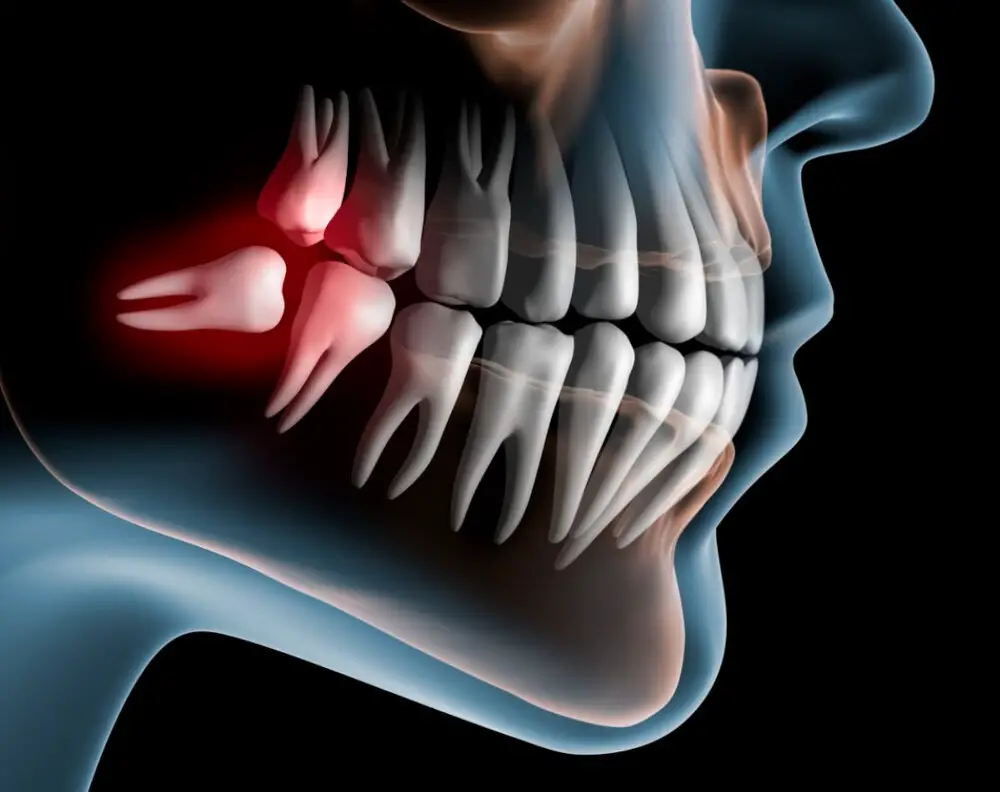Unveiling the Meaning of Gnashing of Teeth: Understanding the Origin and Significance

The phrase “gnashing of teeth” is often used in literature and media to depict a scene of extreme anger, frustration, or pain. It is a vivid and powerful expression that evokes a sense of intense emotion. But what is the origin of this phrase, and what does it truly signify? In this article, we will delve into the meaning of gnashing of teeth, exploring its historical and cultural significance, as well as its contemporary usage. The phrase “gnashing of teeth” can be traced back to biblical times, where it appears in several instances in the New Testament. It is often associated with the concept of judgment and punishment, particularly in the context of the afterlife. The phrase is used to describe the reaction of those who are condemned to eternal damnation, as they gnash their teeth in agony and despair. However, the meaning of gnashing of teeth extends beyond its biblical origin, and it has become a widely used expression in modern language and culture. Understanding the significance of this phrase can provide valuable insights into the human experience of suffering, loss, and frustration.
Meaning of Gnashing of Teeth

The phrase \gnashing of teeth\ is a biblical expression used to describe the act of grinding one’s teeth together in anger, frustration, or despair. It is often associated with feelings of intense pain, anguish, or inner turmoil. The phrase has its origins in the Bible, where it appears several times, most notably in Matthew 8:12 and Matthew 13:42-50, where it is used in the context of describing the fate of the wicked. The gnashing of teeth is often interpreted as a symbol of the torment and suffering that awaits those who have rejected God and chosen to live a life of sin. The gnashing of teeth is often used as a metaphor to describe extreme emotional distress, despair, or frustration in everyday life. It can be seen as a physical manifestation of the intense inner turmoil that a person is experiencing. The act of grinding one’s teeth together in anger or frustration can also be seen as a way of exerting control over one’s emotions, a way of channeling one’s negative energy into a physical action. The phrase is often used in literature and poetry to describe characters who are struggling with intense emotional pain or who are facing a difficult and uncertain future. Overall, the gnashing of teeth is a powerful symbol of the human capacity for suffering and the need for hope and redemption in the face of adversity.
The gnashing of teeth is a phrase that is often used in the Bible, and it refers to the grinding or clenching of teeth, often as a sign of anger, frustration, or pain. This phrase is frequently used in the context of judgment and punishment, particularly in the New Testament, where it is associated with the idea of being cast out of the kingdom of God. The gnashing of teeth is also a common motif in literature and art, often used to convey a sense of despair or hopelessness. While the origin and significance of this phrase may vary depending on the context in which it is used, it is generally understood to represent a state of extreme emotional distress or anguish.
The gnashing of teeth is a phrase that appears in several biblical references, usually as a symbol of intense anguish or anger. In the New Testament, Jesus used the term to describe the fate of the unrighteous in the afterlife. The gnashing of teeth is also mentioned in the Book of Psalms, where it is associated with the wicked and their eventual downfall. The term is believed to have originated from the grinding of teeth that occurs during extreme pain or discomfort, and it serves as a vivid image of the torment experienced by those who reject God’s grace. The gnashing of teeth is a powerful metaphor that underscores the consequences of sin and the importance of salvation.
The concept of gnashing of teeth has been referenced in various cultures throughout history. In the Bible, it is mentioned as a punishment for those who have rejected God and his teachings, while in Greek mythology, it is associated with the punishment of the wicked in the underworld. The act of grinding one’s teeth in frustration or anger has also been used as a literary device in Shakespearean works, such as Macbeth and King Lear. Additionally, in modern times, the phrase \gnashing of teeth\ has been used in popular culture to describe someone who is extremely upset or angry. Overall, the cultural references surrounding the gnashing of teeth highlight the universal fear of punishment and the consequences of one’s actions.
Significance of Gnashing of Teeth

The phrase \gnashing of teeth\ has been used in various religious texts and is often associated with pain, suffering, and despair. In the Christian Bible, the term is used to describe the reaction of those who are cast out into the outer darkness, a place of punishment and separation from God. The gnashing of teeth is a symbol of the intense agony and regret that the condemned experience as they realize the gravity of their sins and the consequences of their actions. The phrase is also used in other religious traditions, such as Judaism and Islam, as a metaphor for the anguish of the damned. The gnashing of teeth is a powerful image that speaks to the human experience of pain and regret. It reminds us that our actions have consequences and that we must be mindful of the choices we make. The phrase is a warning to those who would ignore the moral and ethical principles that guide our lives, and a reminder that we must strive to be better, to do better, and to live up to our highest ideals. The gnashing of teeth is a call to action, a challenge to embrace our responsibilities and to live with purpose and meaning. It is a symbol of the struggle that we all face as we seek to find our place in the world and to make a positive difference in the lives of others.
Symbolism has been an integral part of religion since ancient times. Religious symbols are often used to represent abstract concepts, ideas, or beliefs that cannot be easily explained in words. These symbols can take many forms, including animals, plants, objects, or even gestures. For example, in Christianity, the cross is a potent symbol of the sacrifice of Jesus Christ, while the Star of David is a symbol of Judaism. The use of symbols in religion can help believers to connect with their faith on a deeper level, as it provides a visual representation of complex concepts, making them more accessible and understandable. The gnashing of teeth, which is a symbol of pain and suffering, is a common motif in many religions, including Christianity, Islam, and Buddhism. Understanding the significance and origin of religious symbols is essential for believers who want to deepen their understanding of their faith.
Symbolism is a powerful tool used in literature and art to convey deeper meanings and emotions beyond the surface level. It involves the use of symbols, whether they be tangible objects, actions, or even colors, to represent abstract concepts or ideas. Symbolism is often used to evoke emotions and provoke thought in the reader or viewer. In literature, authors may use symbolism to add depth to their characters, themes, and plotlines. In art, artists may use symbolism to create a certain mood or atmosphere, or to express their views on societal or political issues. The use of symbolism in both literature and art allows for a richer, more complex interpretation of the work, encouraging readers and viewers to delve deeper into the meaning behind the piece.
Psychological interpretation of the gnashing of teeth involves understanding the symbolic representation of teeth and the act of grinding them. Teeth are often associated with power, strength, and aggression, while grinding them can represent inner turmoil or frustration. The gnashing of teeth can be seen as an outward expression of intense emotion, such as anger, fear, or anxiety. This interpretation may suggest that those who gnash their teeth are struggling with unresolved issues or negative feelings. By examining the psychological implications of this behavior, individuals may gain a better understanding of their own emotional state and work towards resolving any underlying issues.
Origin of Gnashing of Teeth

The phrase \gnashing of teeth\ is a powerful and dramatic image that is often used in literature and religious texts to describe extreme anger, frustration, or despair. The origin of this phrase can be traced back to ancient times when people used to grind their teeth in anger or frustration. In fact, the word \gnash\ comes from the Old English word \gnastan,\ which means to grind or gnash the teeth. This action was often associated with extreme emotions such as rage, grief, or intense pain. The concept of gnashing of teeth has been used in various religious texts to describe the fate of sinners or those who do not follow the path of righteousness. In the Bible, it is mentioned several times in the New Testament, where it is used to describe the punishment of those who are cast out of the kingdom of God. The gnashing of teeth is believed to be a sign of extreme anguish, regret, and despair that sinners will experience when they realize the gravity of their sins and the consequences that come with them. Today, the phrase \gnashing of teeth\ is still used to describe extreme emotions or situations where people feel helpless, frustrated, or angry beyond measure.
In order to fully comprehend the meaning and significance of the gnashing of teeth, it is imperative to consider its historical context. The phrase, which refers to the grinding of one’s teeth in anger, frustration, or agony, has been used throughout history to describe intense emotional distress. In biblical times, it was often associated with punishment and judgment, particularly in the context of hell and eternal damnation. The gnashing of teeth also appears in literature, art, and music, where it serves as a symbol of human suffering and despair. By examining the historical context surrounding this phrase, we can gain a deeper understanding of its cultural significance and the emotions it represents.
Linguistic analysis is a crucial tool in understanding the origin and significance of idiomatic expressions like \gnashing of teeth.\ Through this method, linguists analyze the word usage, grammar, and syntax of a particular phrase to uncover its deeper meaning and historical context. For example, the phrase \gnashing of teeth\ is often used to describe extreme frustration or anger, but it also has biblical origins, where it is associated with the punishment of sinners in hell. By examining the linguistic elements of this expression, we can gain a better understanding of how language evolves over time and how cultural and religious beliefs shape our language use.
Anthropological perspectives provide a valuable lens through which to understand the origin and significance of gnashing of teeth. Anthropologists study human behavior, culture, and society across time and space, providing insights into the way people interact with the world around them. By examining the cultural and historical context of gnashing of teeth, anthropologists can shed light on its meaning and significance in different societies and cultures. They can also explore how the practice has evolved over time, and what it can tell us about the social and cultural changes that have taken place. Through their research, anthropologists help us to better understand the ways in which human behavior and culture are shaped by our social and historical contexts, and how they can be influenced by our own personal experiences and beliefs.
Conclusion

In conclusion, the gnashing of teeth is a symbolic representation of extreme anguish, despair, and frustration. Its origin can be traced back to religious texts and has been used metaphorically in literature and art. The significance of gnashing of teeth lies in its portrayal of the intensity of suffering and the urgency for action. It is a powerful reminder that our actions have consequences and that we must strive to make positive choices in life. Understanding the meaning of gnashing of teeth can help us empathize with those who are struggling and motivate us to take action to alleviate their suffering. Ultimately, it is a call to be mindful of our actions and to strive for compassion and kindness towards others.







